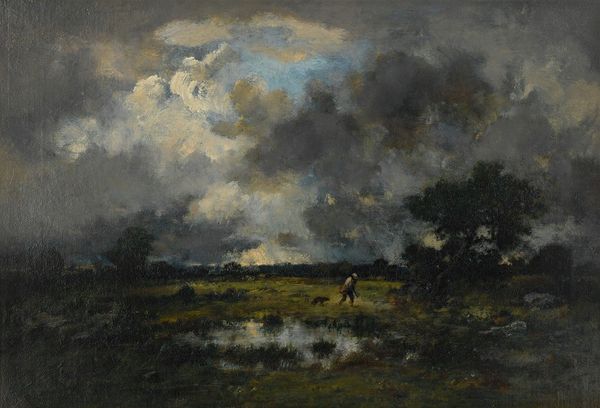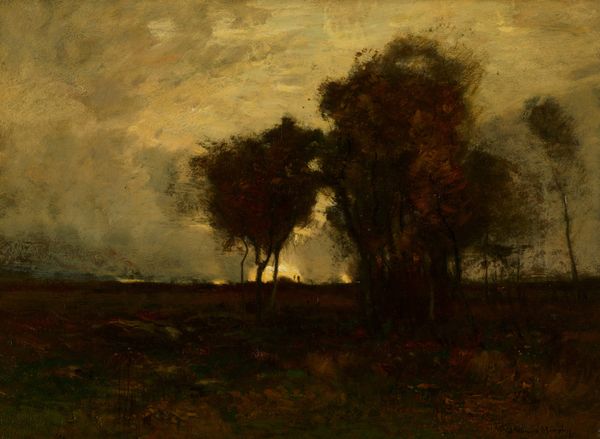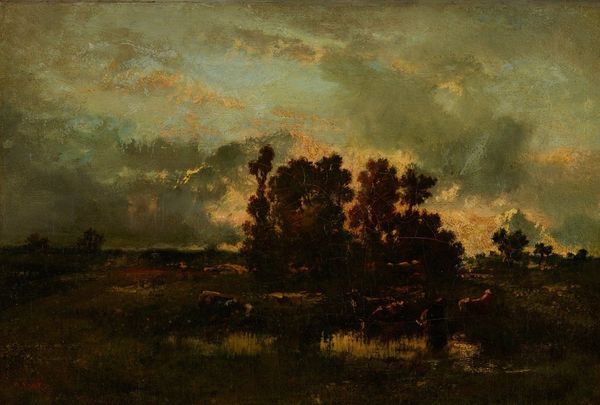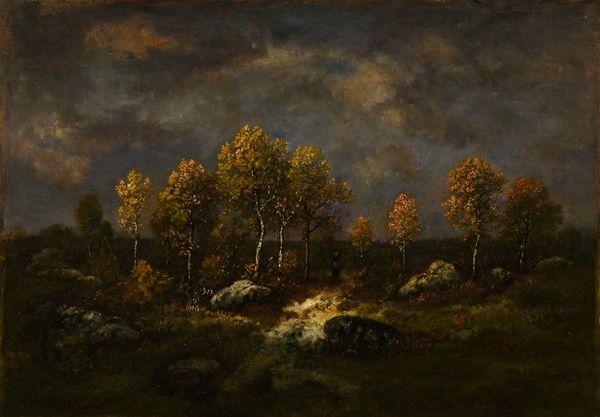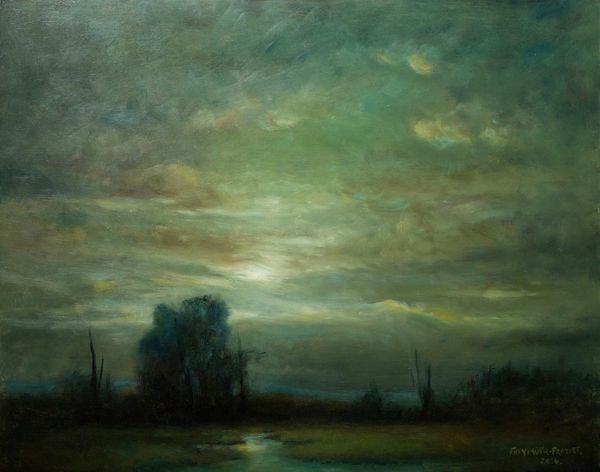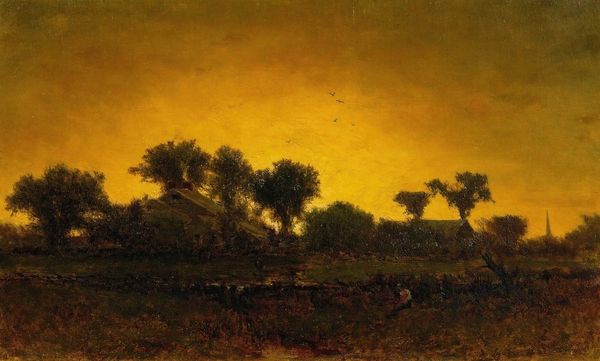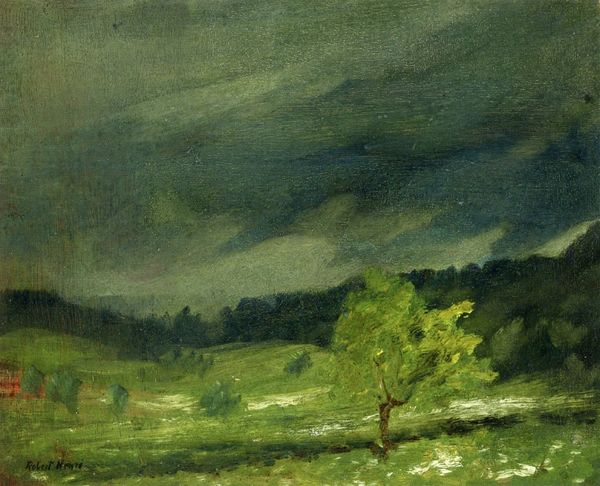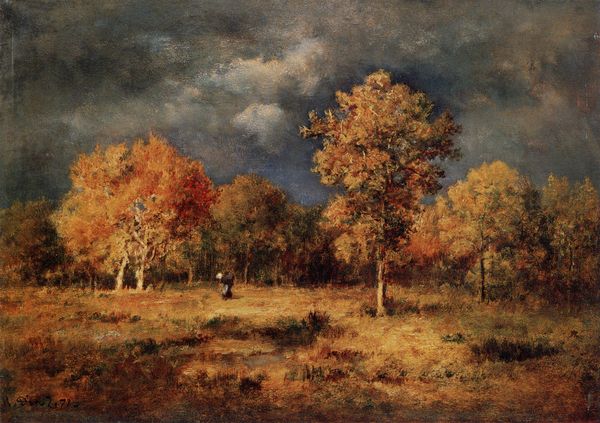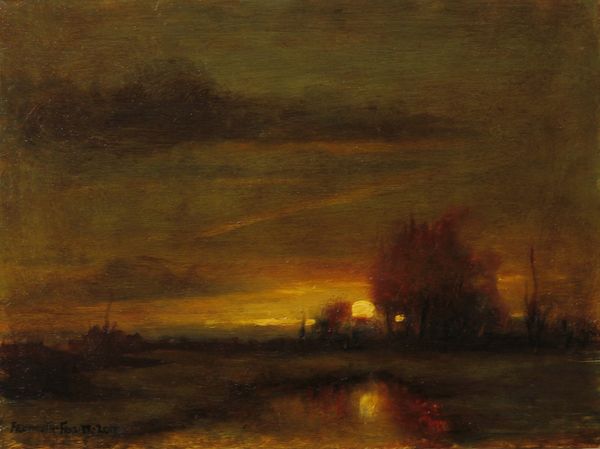
Copyright: Public Domain: Artvee
Curator: Let's turn our attention to Narcisse Virgilio Diaz's "Stormy Landscape," an oil painting from 1872. Editor: Immediately striking! That light bursting through the heavy clouds…it’s both dramatic and unsettling. Curator: Diaz, as part of the Barbizon school, sought to depict nature authentically. He was very deliberate about escaping the constraints of the academy in order to find that truer representation of landscape. What do you observe about the painting's making? Editor: Look at that impasto in the sky – thick layers of paint. It gives a real sense of the storm’s turbulent energy and a very clear indication of Diaz’s rapid working method. The earthier tones and the scrubbier textures in the foreground emphasize the raw materiality of the landscape itself. This wasn't just about pretty scenery; it was about the dirt, the weather, and the act of applying pigment. Curator: It’s important to note the cultural context, though. Paintings like this gained popularity as industrialization spread. This longing for an idealized view of nature emerged, partly in response to the changes. Editor: Sure, but it goes beyond escapism for me. Diaz makes visible the actual labor of representing landscape. It’s about pushing paint around and manipulating a physical medium. Notice how little detail is present, but there are such palpable forces at play. The hand of the artist becomes prominent. Curator: True, the drama is certainly palpable. His art served a public eager for reassuring visions of an untamed world. In galleries and exhibitions, viewers could connect, however sentimentally, with nature as if it were separate from burgeoning city life. Editor: It's compelling to consider the very materials and method brought Diaz success. This landscape isn’t passive—it’s rendered, wrestled with. A physical encounter frozen in time. Curator: A really helpful reminder that artworks always represent complex histories of cultural desires and making practices. Editor: Absolutely! Next time you see a landscape, remember it's more than just a pretty view – it's a testament to how materials and human touch mediate our perceptions.
Comments
No comments
Be the first to comment and join the conversation on the ultimate creative platform.
